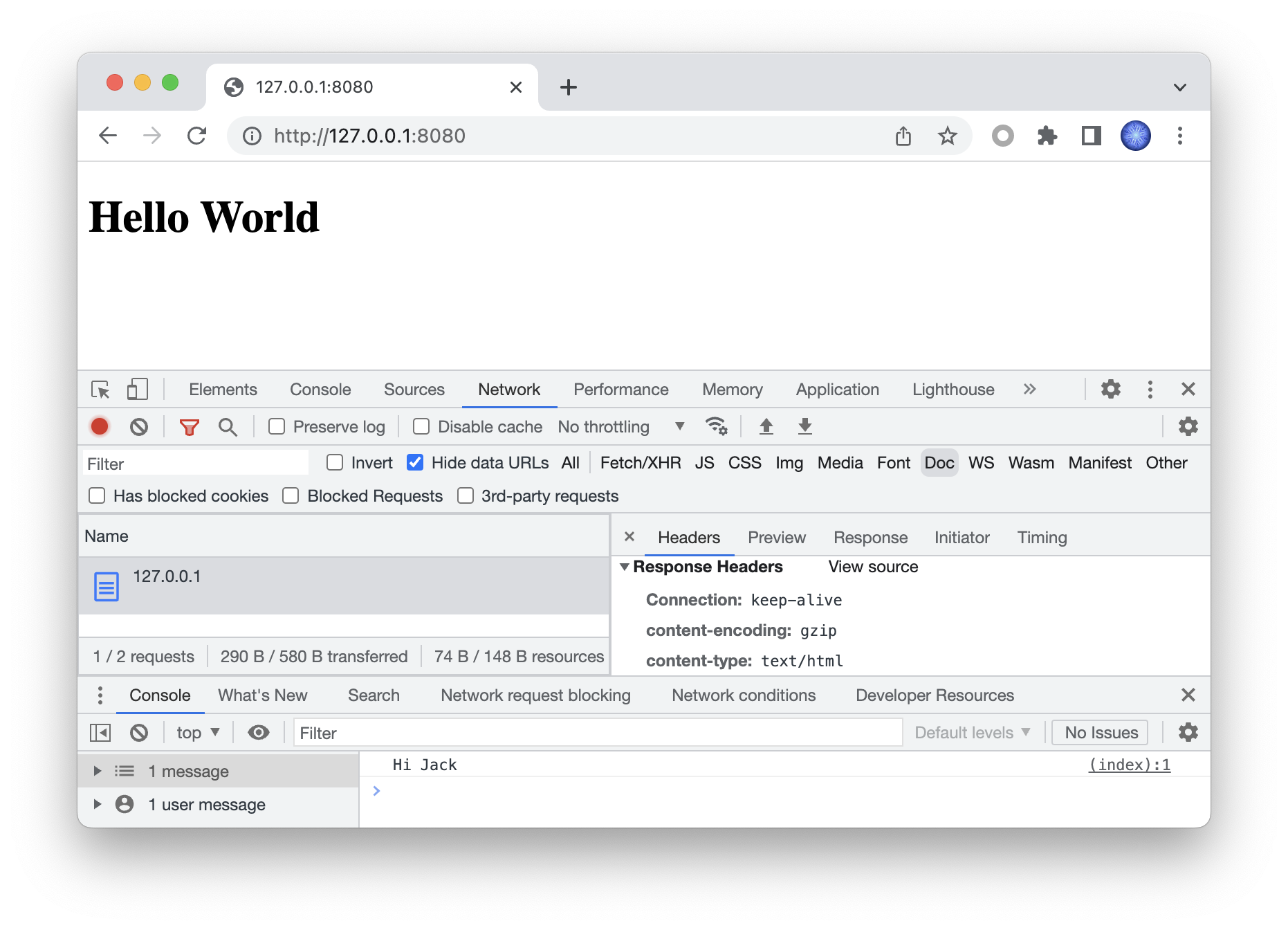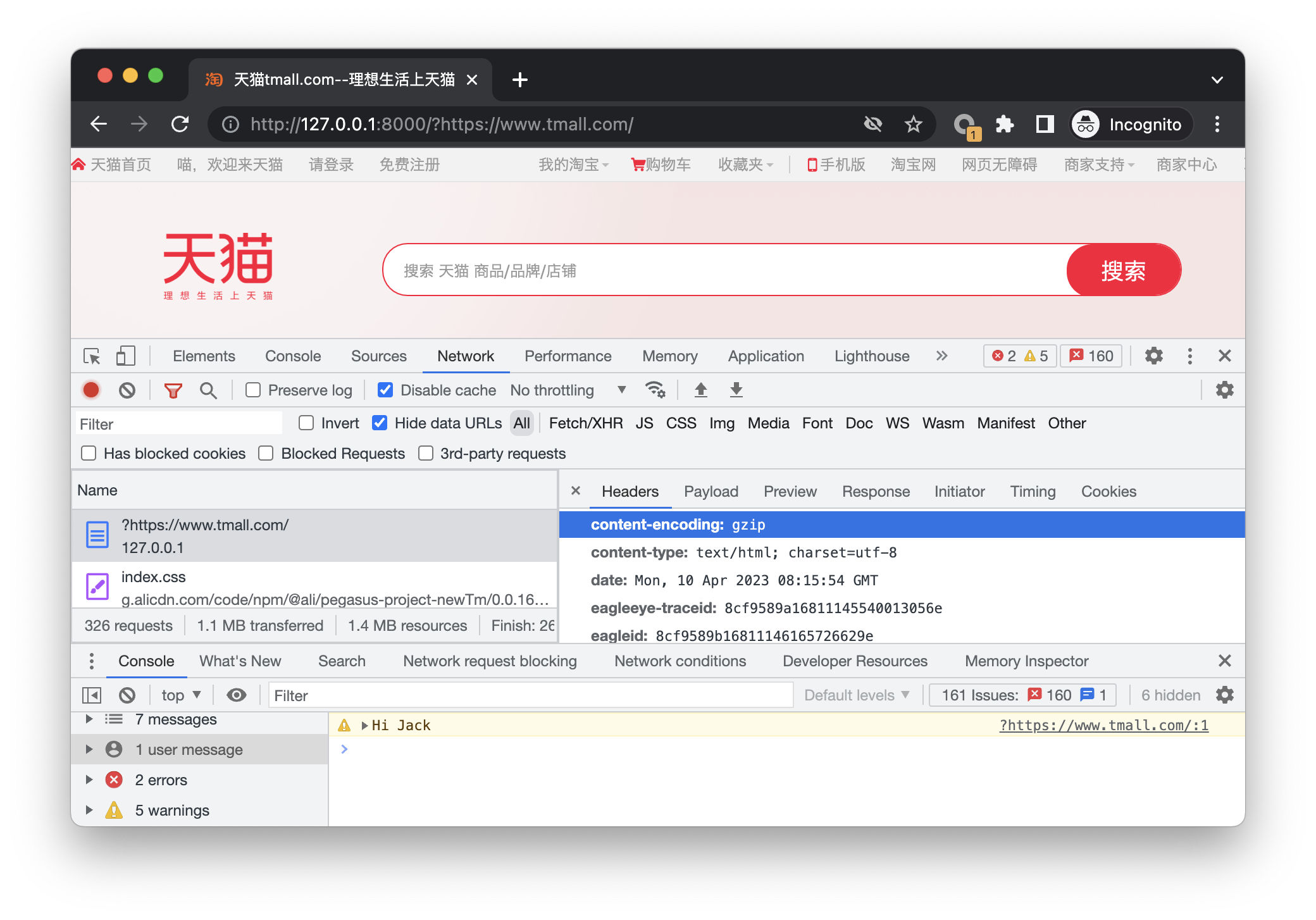流量劫持 —— GZIP 頁面零開銷注入 JS
前言
HTTP 代理給頁面注入 JS 是很常見的需求。由於上游伺服器返回的頁面可能是壓縮狀態的,因此需解壓才能注入,同時為了節省流量,返回下游時還得再壓縮。為了注入一小段程式碼,卻將整個頁面的流量解壓再壓縮,白白浪費大量效能。
是否有高效的解決方案?本文從注入位置、壓縮格式、校驗演演算法進行探討。
注入位置
常見的注入方式,是對某個 HTML 標籤進行替換,例如將 <head> 替換成 <head><script>...。
字元匹配的方式雖然簡單,但並不嚴謹。假如頁面中沒有出現 <head>,那麼就不會注入了。若要考慮大小寫、標籤存在屬性的情況,還得使用正則匹配。更極端的情況,例如第一個匹配點出現在註釋中,那麼注入的程式碼根本不會執行:
<html>
<!-- <head></head> -->
<head></head>
<body></body>
</html>
至於在閘道器上解析 HTML 這樣的重量級操作,通常不會考慮。
現實中使用正則匹配足以支援大多數情況。不過正則匹配仍有一定的開銷,是否有更輕量甚至零開銷的注入方式?
其實可以有,直接將程式碼注入到頁面最頂端!這種做法雖然不規範,但主流瀏覽器都支援。如果擔心 doctype 失效,可以在注入的程式碼裡補上:
<!doctype html><script src="inject.js"></script>
<!doctype html>
<html>
<head></head>
<body></body>
</html>
這樣閘道器無需任何替換操作,只需轉發時將注入的程式碼拼在第一個 chunk 之前即可。
不過這只是明文傳輸的情況。如果上游返回的是壓縮流量,那麼在其之前拼上「壓縮後的注入程式碼」,是否仍有效?
我們以 gzip 為例接著探討。
檔案格式
gzip 使用 DEFLATE 演演算法壓縮資料(下圖 body 部分),並在前面加上 10 位元組的檔案頭、不定長的可選頭(記錄檔名等),末尾加上 8 位元組的檔案尾:
| struct | field | length |
|---|---|---|
| header | magic number (1f 8b) | 2 |
| compression method (08) | 1 | |
| flags | 1 | |
| timestamp | 4 | |
| compression flags | 1 | |
| operating system ID | 1 | |
| extra headers (optional) | ... | ... |
| ... | ... | |
| body | block1 | ... |
| block2 | ... | |
| ... | ... | |
| trailer | CRC32 | 4 |
| uncompressed data length | 4 |
由於我們的資料在最前面,因此需提供檔案頭,並刪除上游返回的檔案頭。
此外,還需要確定如下問題:
-
檔案尾的 CRC32 校驗是否需要更新
-
壓縮資料中每個 block 塊是否獨立
第一個問題即使不調研,大概也能猜到,在瀏覽器端肯定是不需要的。因為網頁是流模式的,收到一些渲染一些。等渲染完成後才說資料有問題,那網頁是留著還是不讓顯示?至少到目前還沒見過網頁提示 gzip 校驗失敗的錯誤。
第二個問題,在 RFC1951 中有講解:
Each block is compressed using a combination of the LZ77 algorithm
and Huffman coding. The Huffman trees for each block are independent
of those for previous or subsequent blocks; the LZ77 algorithm may
use a reference to a duplicated string occurring in a previous block,
up to 32K input bytes before.
Each block consists of two parts: a pair of Huffman code trees that
describe the representation of the compressed data part, and a
compressed data part. (The Huffman trees themselves are compressed
using Huffman encoding.) The compressed data consists of a series of
elements of two types: literal bytes (of strings that have not been
detected as duplicated within the previous 32K input bytes), and
pointers to duplicated strings, where a pointer is represented as a
pair<length, backward distance>. The representation used in the
"deflate" format limits distances to 32K bytes and lengths to 258
bytes, but does not limit the size of a block, except for
uncompressible blocks, which are limited as noted above.
每個塊可能會參照之前塊的資料,好在參照方式是從當前位置計算的(<長度, 反向距離>),因此是個相對值,不會因資料流開頭插入我們的塊而受到干擾。
此外還需注意的是,每個塊的頭部有個 BFINAL 欄位標記當前是否為最後一塊,因此我們的塊中該欄位不能被標記,否則後續塊就不會解析了。
嘗試
我們用 Node.js 實現一個初步演示:
import zlib from 'node:zlib'
import http from 'node:http'
// 上游返回的 gzip 資料(出於演示,未使用流模式)
const htmlGzipBuf = zlib.gzipSync('<h1>Hello World</h1>')
// 注入程式碼的 gzip 資料(部分壓縮,防止被標記成最後一個 block)
let injectGzipBuf = Buffer.alloc(0)
const tmp = zlib.createGzip()
tmp.on('data', buf => {
injectGzipBuf = Buffer.concat([injectGzipBuf, buf])
})
tmp.write('<!doctype html><script>console.log("Hi Jack")</script>')
tmp.flush()
http.createServer((req, res) => {
res.setHeader('content-type', 'text/html')
res.setHeader('content-encoding', 'gzip')
// 輸出壓縮態的注入程式碼
res.write(injectGzipBuf)
// 跳過上游的 gzip 檔案頭(預設 10 位元組)
res.end(htmlGzipBuf.subarray(10))
}).listen(8080)
這個案例中,我們兩次輸出的都是壓縮態資料,最終被瀏覽器成功解析。

經測試所有主流瀏覽器都沒問題,curl 也沒問題。但也有一些庫會校驗 CRC,例如 Node.js 的 fetch:
const res = await fetch('http://127.0.0.1:8080/')
const reader = res.body.getReader()
for (;;) {
const {done, value} = await reader.read()
if (done) {
break
}
console.log(value)
}
讀取最後塊時報錯:
Uncaught TypeError: terminated
at Fetch.onAborted ...
[cause]: Error: incorrect data check
at Zlib.zlibOnError [as onerror] ...
code: 'Z_DATA_ERROR'
導致讀取的資料比預期少。
校驗演演算法
如何更新校驗值?最笨的辦法,就是把上游流量全都解開,重新計算一次 CRC。畢竟解壓的開銷比壓縮小很多,還是可以接受的。
不過本文追求的是低開銷甚至零開銷,因此這個方案很不完美。記得曾經開發防火牆時,如果封包只修改很小一部分,那麼 checksum 是不用重新計算的,只需稍加修正即可。這個思路是否可用在 CRC 上?畢竟 CRC 又不是什麼密碼學 hash 演演算法,就幾個簡單的 xor 運算,大概是可以玩出一些花招的。
一查檔案,發現不僅可以,甚至這個奇技淫巧還被 zlib 庫收錄了,提供了一個 crc32_combine 函數,用於合併兩個 CRC32 值:
crc32_combine(crc1, crc2, len2)
Combine two CRC-32 check values into one. For two sequences of bytes,
seq1 and seq2 with lengths len1 and len2, CRC-32 check values were
calculated for each, crc1 and crc2. crc32_combine() returns the CRC-32
check value of seq1 and seq2 concatenated, requiring only crc1, crc2, and
len2.
至於原理細節,可參考:
https://stackoverflow.com/questions/23122312/crc-calculation-of-a-mostly-static-data-stream/23126768
https://github.com/stbrumme/crc32/blob/master/Crc32.cpp
使用這個方案,即可相容所有 HTTP 使用者端。
完整演示
前面的演示出於簡單,未考慮 gzip 擴充套件檔案頭,並且直接使用 Buffer 代替資料流。下面分享一個更完整的演示:
https://github.com/EtherDream/gzip-js-injector

後記
幾年前研究流量劫持時寫的文章,不過一直沒釋出,前段時間翻新了下並補了個 demo。由於那時還沒 brotli 壓縮,因此也沒調研。之後有時間再補充。